Furniture And Not Only
One of the things you can expect to find when visiting an old castle is old furniture. If the castle is old and big enough, you have the chance to see a lot of different styles.

Today I'm going to take you back in time and show you some furniture from different centuries, from the Citadel of Fagaras.
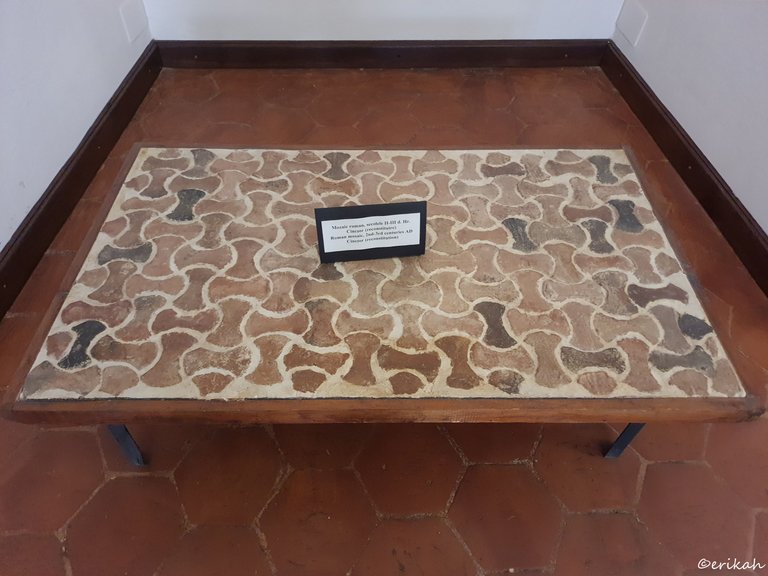
This is a reconstitution of a Roman mosaic from the 2nd - 3rd century AD. It is a table now, but it's still impressive. Would be interesting to know how they cut those stones out to look relatively equal. Today, with the latest technology everything is possible, but back then they had no tools for high precision work.
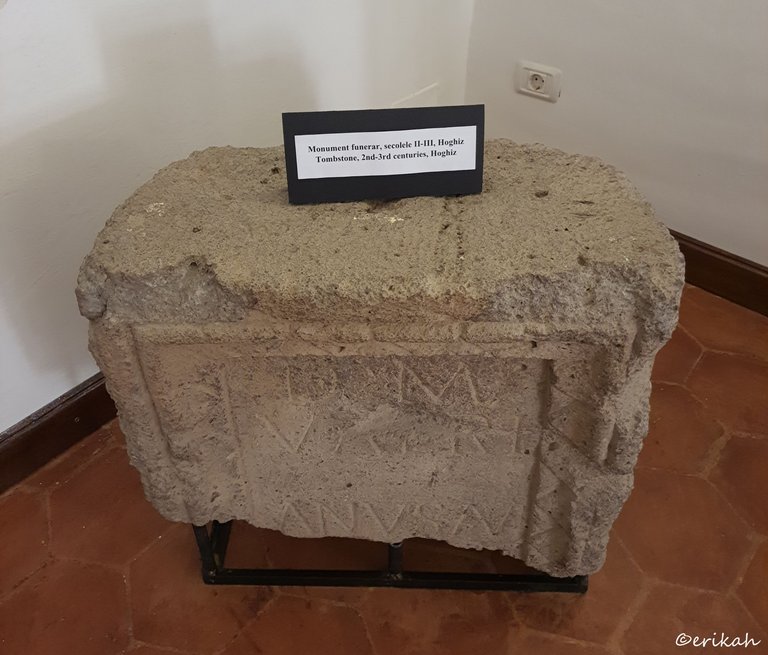
This is not a piece of furniture, but a tombstone from the 2nd - 3rd century AD, found at Hoghiz, which is a Transylvanian village. These tombstones are testimony of the past and very valuable as well. The truth is, many of these tombstones and headstones had been destroyed intentionally over the centuries, cemeteries had disappeared from the face of the earth, to remove any evidence that had been uncomfortable to some.
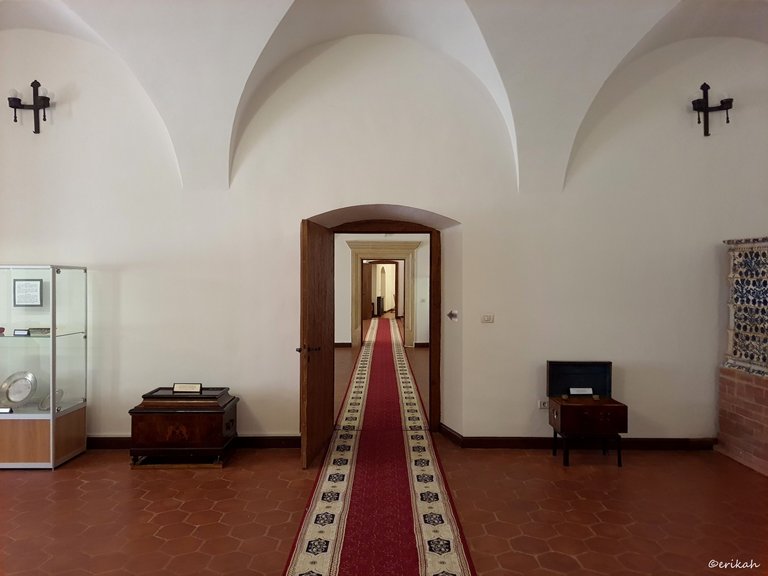
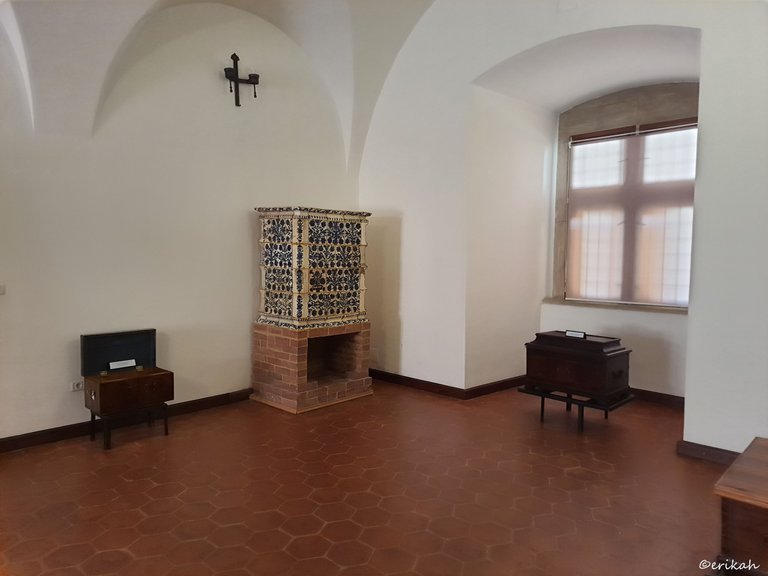
Those wooden chests were of high value back in those days.
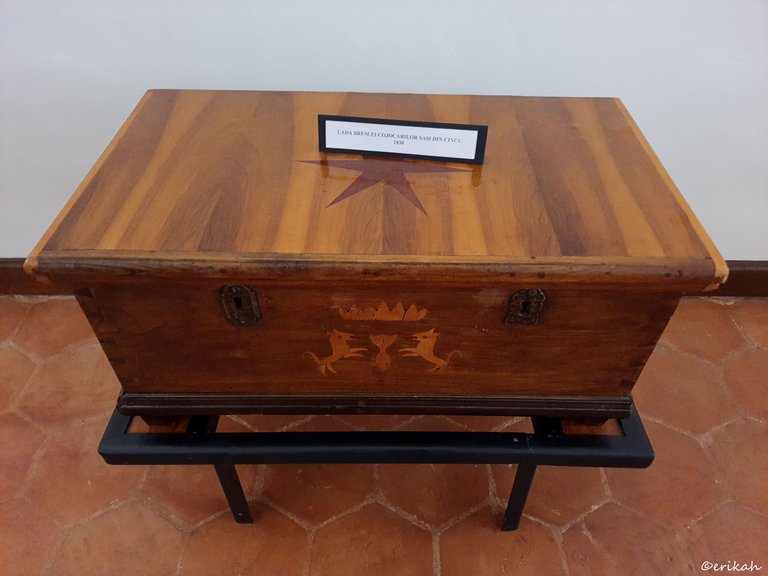
This is a crate of the Saxon Cobblers' Guild of Cincu, from 1830. Most likely the design you see on the front side was their crest. This chest is almost 200 years old and it's still in a very good condition.

Crate of the shoemakers' guild from 1839. This one is even more stylish and the year is engraved in it. These crates or chests served as keepsake boxes, or safes we have today. Obviously this was a rudimentary version and not so safe, but that's what they had available at that stage in history.
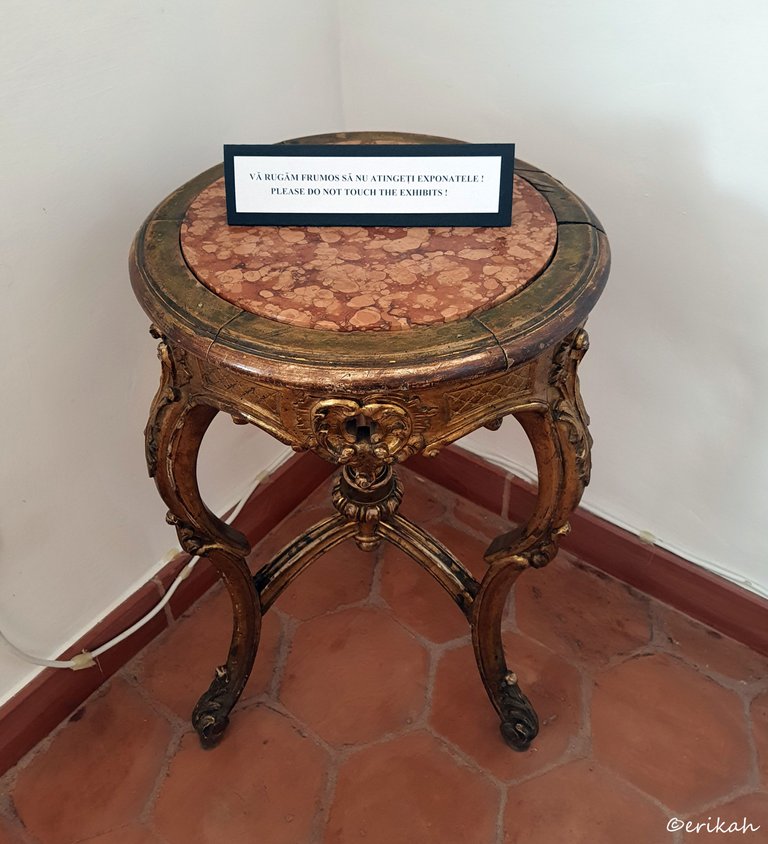
This design is most likely known for all of us from museums and movies as well. It is a very popular and stylish one. For some reason I can't explain it reminds me of Louis XIV or Louis the Great and Versailles. The palace of Versailles is full is similar furniture by the way.
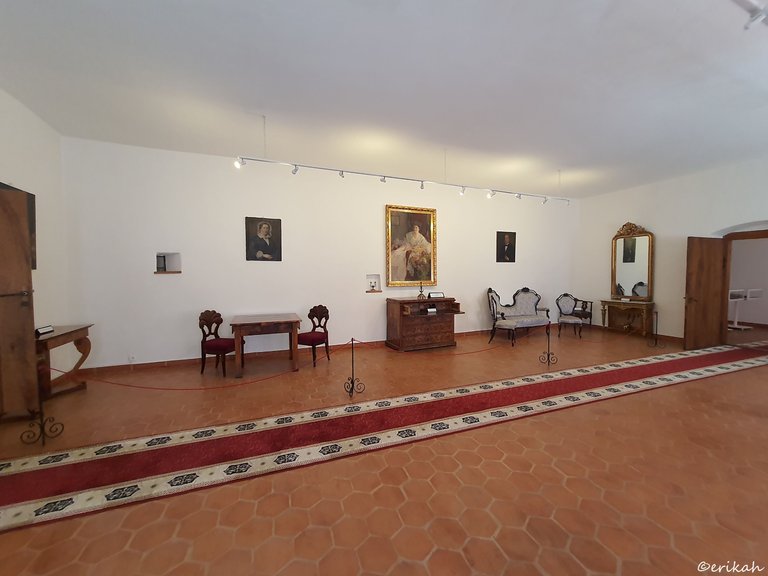
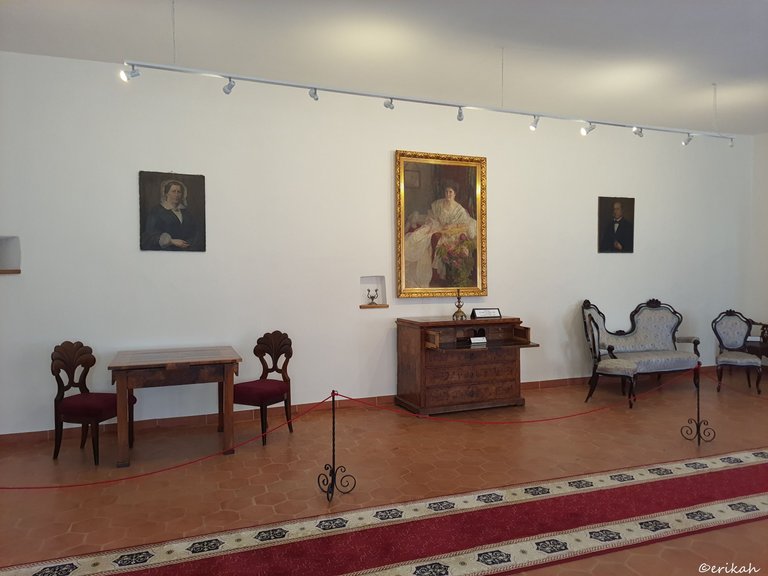
Imagine spending your day in a room like the one in the photo above, dressed in those very rigid clothes, doing nothing basically. Maybe playing cards or writing letters, reading some books. All day, every day, while your ancestors are looking at you from the painting on the wall.
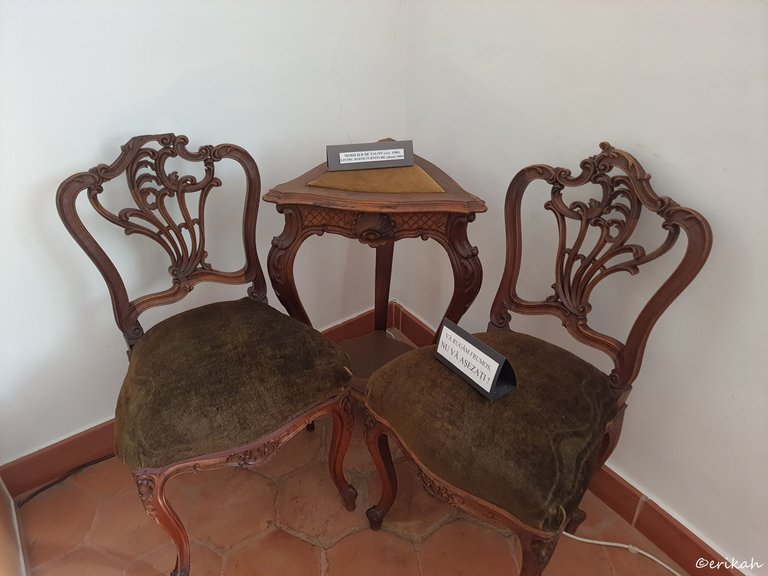
Living room furniture from around 1900. A gossip party ladies? Anyone?
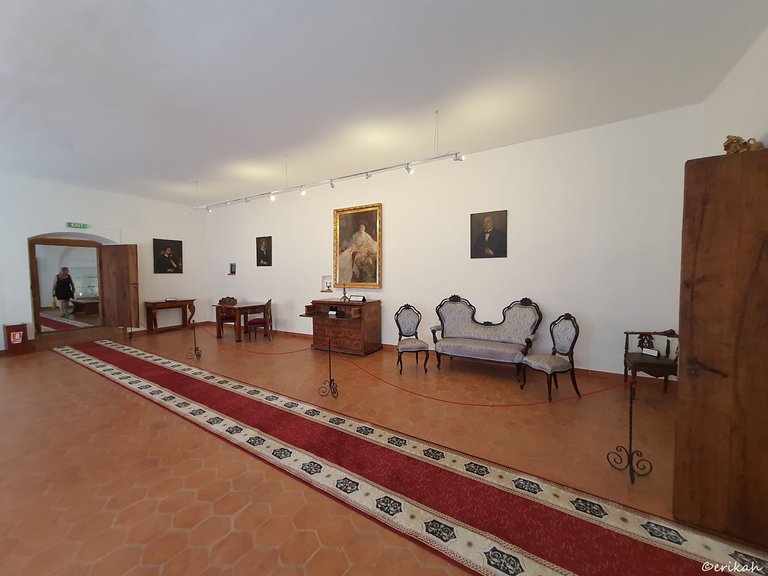
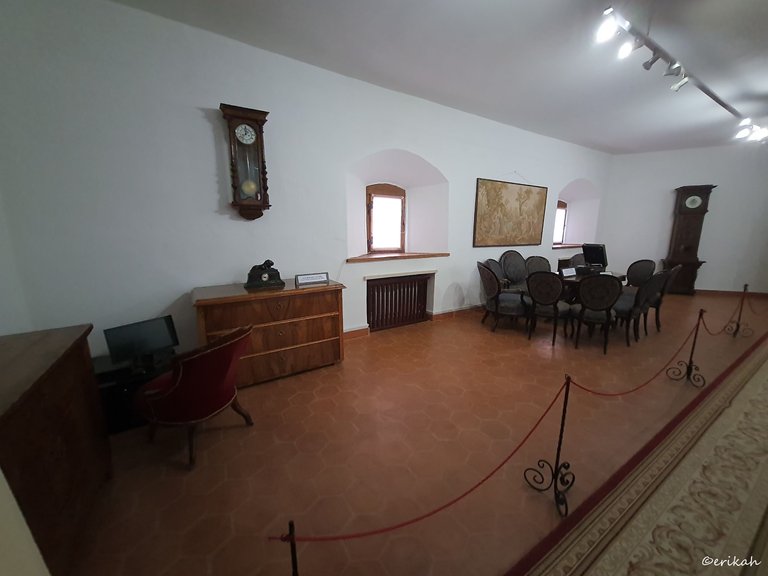
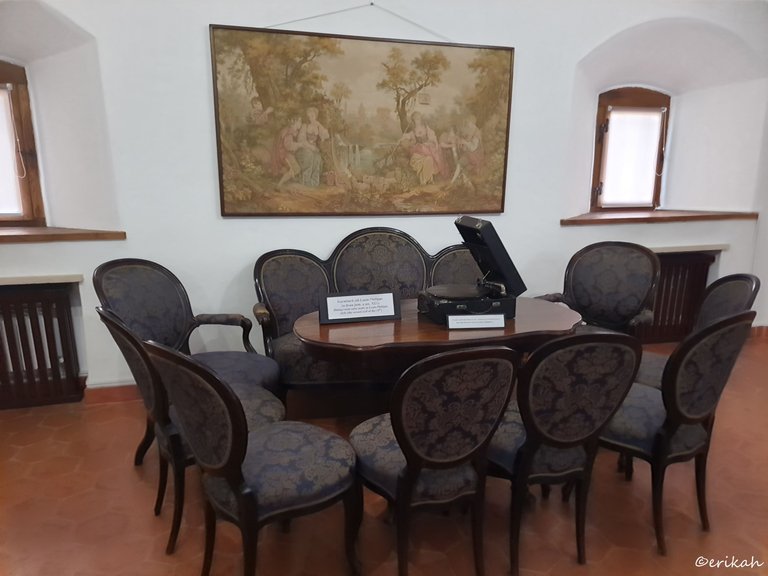
This room looked a bit different, with the oval(ish) table and more comfortable chairs. I'd say it looked more friendly than the previous one.
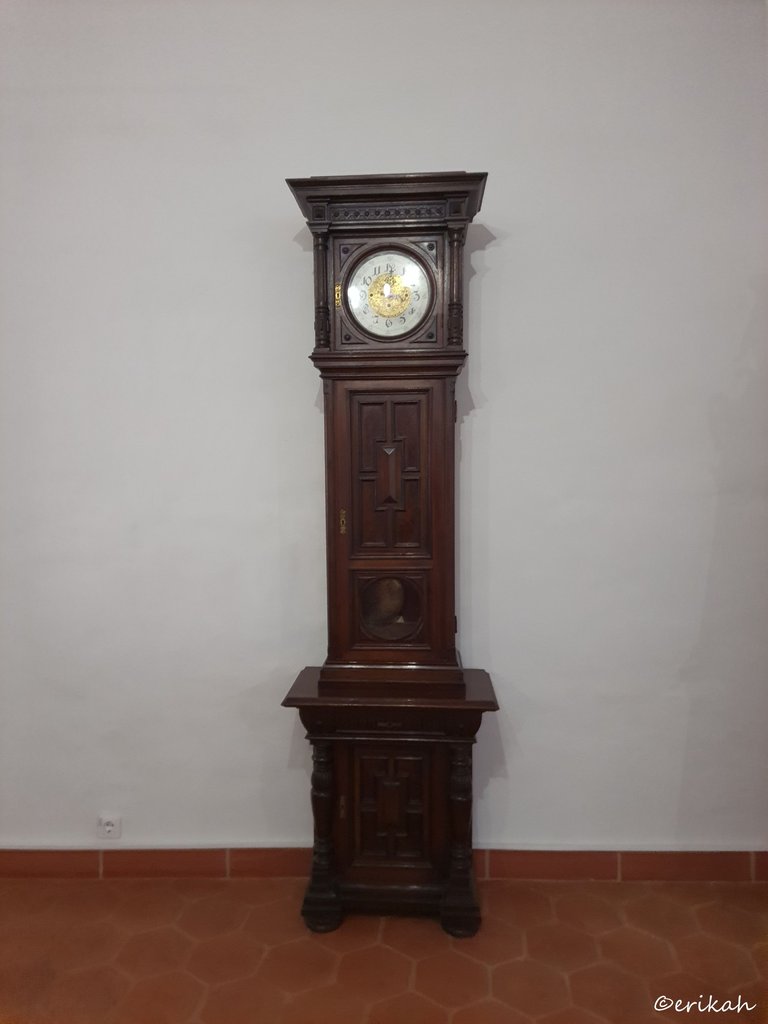
I have a thing for these clocks. Have seen quite many in museums and castles and it always makes me want one, but obviously it would not match the furniture I have and besides, who has room for such a piece of furniture, which you will never use.
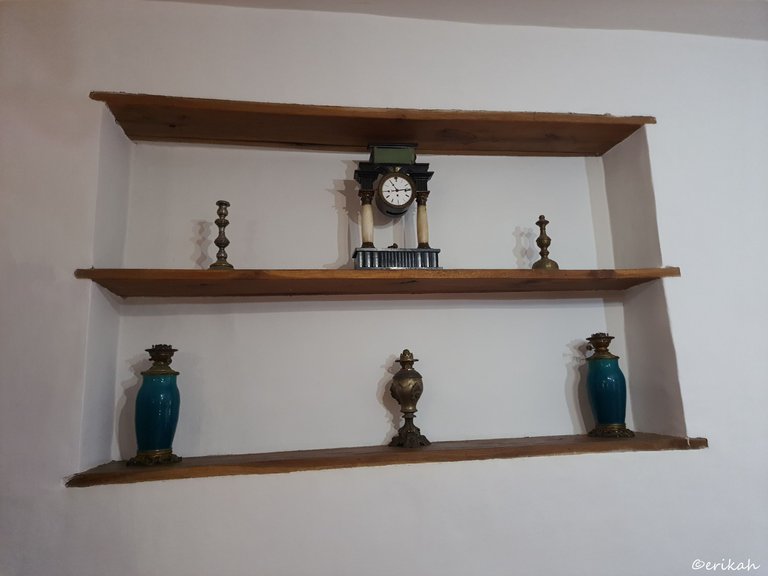
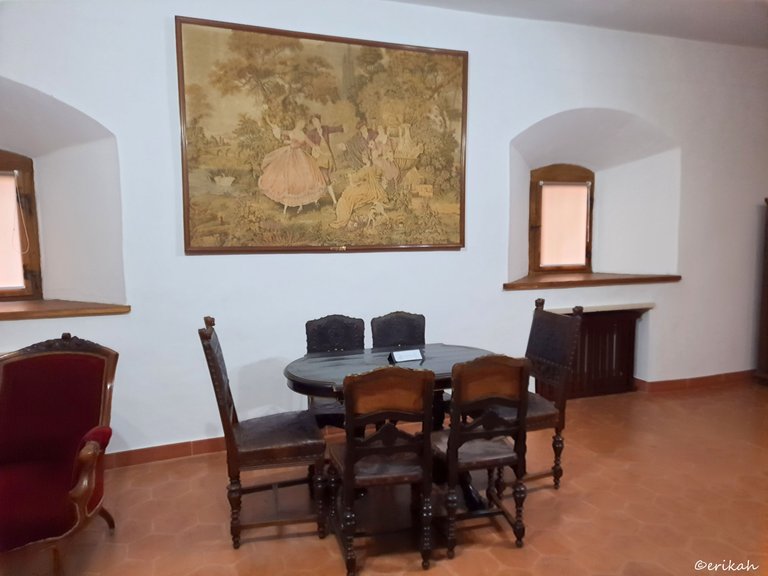
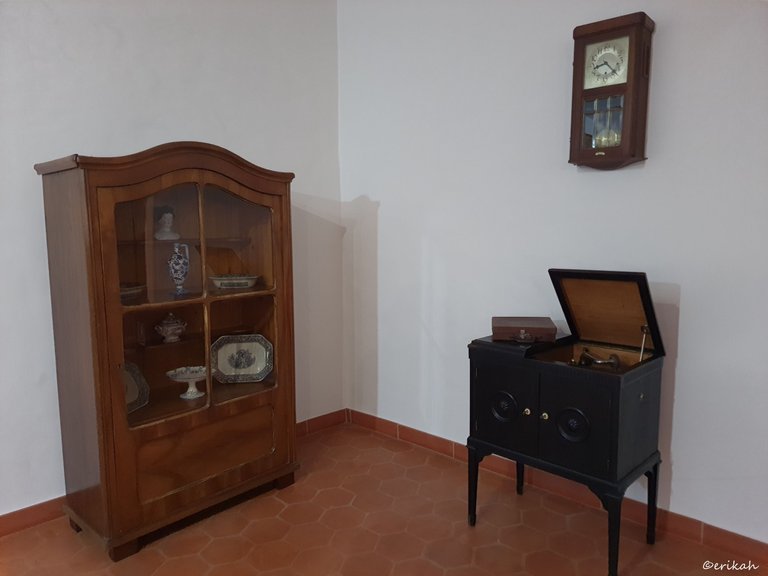
This is where it gets interesting. Look at the cabinet on the right, with the open top. I'm not sure how many of you are familiar with what you see. It is a music player, the ancestor of record player, called phonograph.
A phonograph, later called a gramophone (as a trademark since 1887, as a generic name in the UK since 1910), and since the 1940s a record player, or more recently a turntable,[a] is a device for the mechanical and analogue reproduction of recorded[b] sound. The sound vibration waveforms are recorded as corresponding physical deviations of a spiral groove engraved, etched, incised, or impressed into the surface of a rotating cylinder or disc, called a "record". To recreate the sound, the surface is similarly rotated while a playback stylus traces the groove and is therefore vibrated by it, very faintly reproducing the recorded sound. In early acoustic phonographs, the stylus vibrated a diaphragm which produced sound waves which were coupled to the open air through a flaring horn, or directly to the listener's ears through stethoscope-type earphones. source
Have you ever seen one? Have you ever heard one playing? I've seen several, but have never actually heard one playing.
Imagine back in those days, music was a rarity and they only had music if someone played some of the instruments live. This is why ladies and gentlemen too, were forced to learn playing the piano and later they had to perform in front of the guests. It was kind of showing off with their talent, or lack of it in many cases. Playing the piano was part of their education.
The phonograph and its later forms came only in the 19th century. Today everyone holding a cellphone has music, one way or another, but back in those days life was very different.
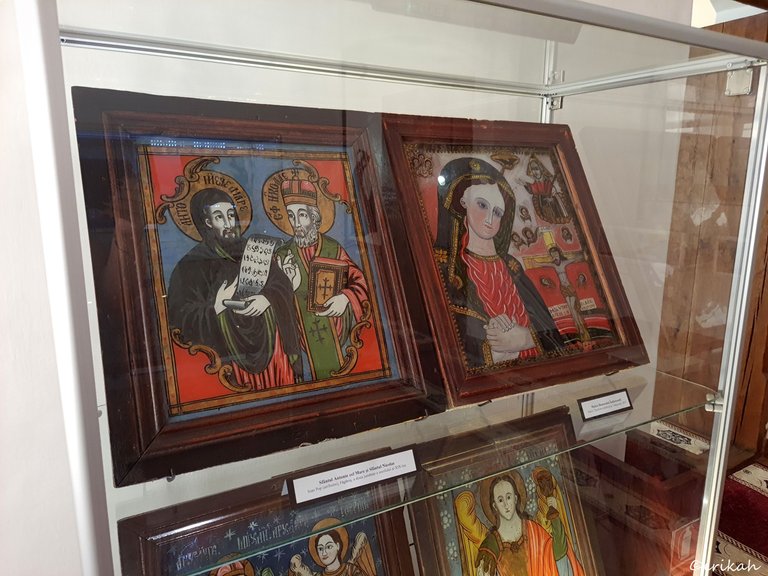
Nobles usually had their own chapel or church, inside the walls. I haven't seen one at the Fagaras citadel though. Maybe I missed it? But there were these religious paintings from the 19th century.
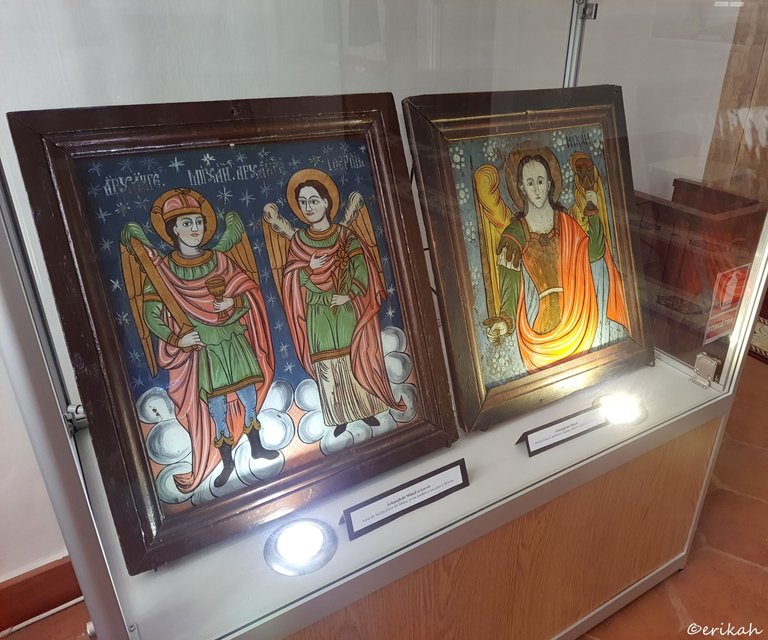
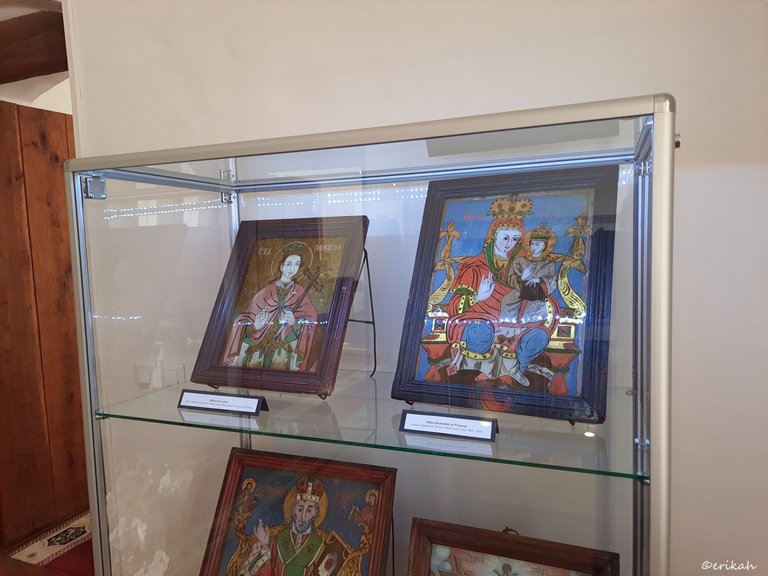

Portraits of saints, scenes from the bible, most of them from the 19th century.
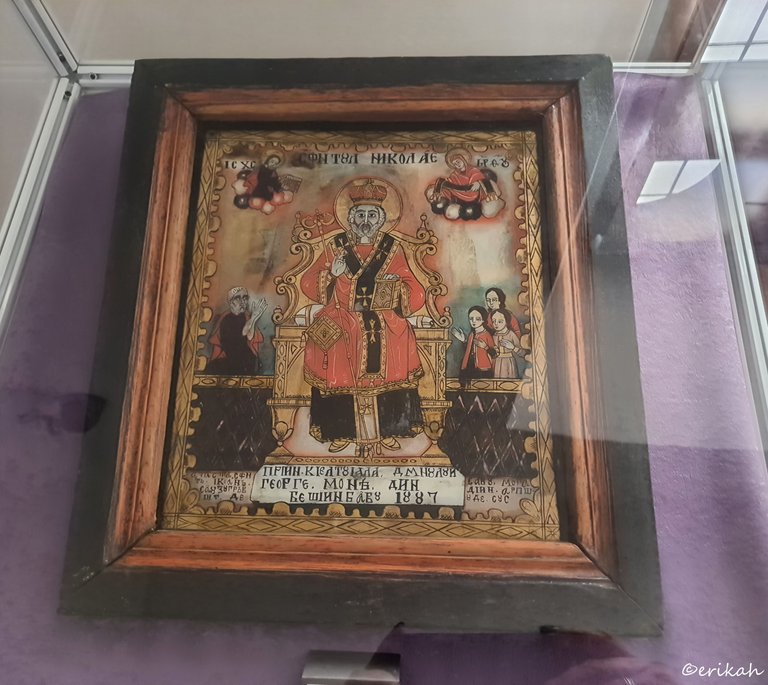
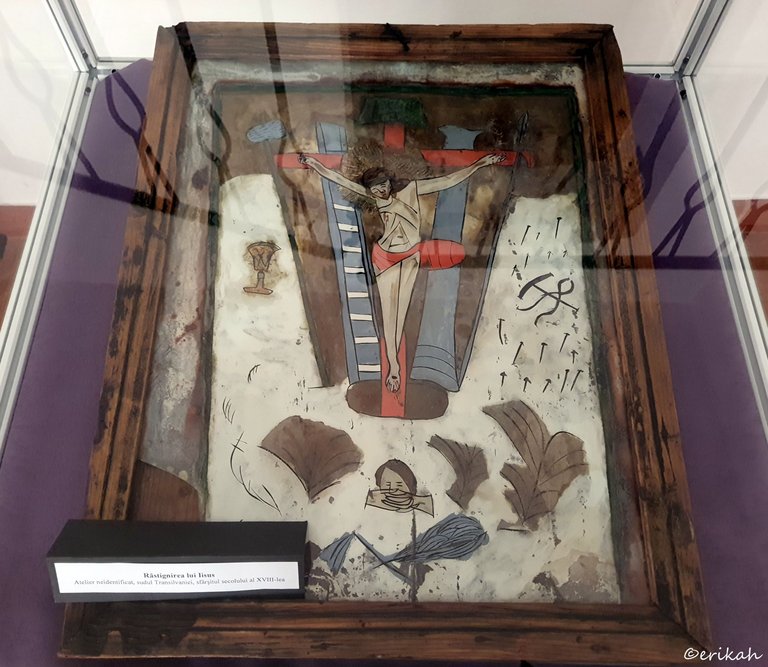
This is actually from the 18th century. Impressive!

If you're a newbie, you may want to check out these guides:
- Communities Explained - Newbie Guide
- Cross Posting And Reposting Explained, Using PeakD
- Hive Is Not For Me
- How To Pump Your Reputation Fast - Newbie Guide
- Tips And Tricks & Useful Hive Tools For Newbies
- More Useful Tools On Hive - Newbie Guide
- Community List And Why It Is Important To Post In The Right Community
- Witnesses And Proposals Explained - Newbie Guide
- To Stake, Or Not To Stake - Newbie Guide
- Tags And Tagging - Newbie Guide
- Newbie Expectations And Reality
- About Dust Vote And Hive Reward Pool, by libertycrypto27

Siempre aportando a la cultura la mejor @erikah 👏😊
I'm trying to :)
Fun post. I love icon art like the last several photos. I also love the design of old furniture. Like the settee or loveseat that is like two chairs that are attached in the middle. Its like two full chairs with the arms and shaped back but they are connected into a sofa.
Icon art is a real thing and I appreciate it as art, but can't really be enthusiastic about it as in my religion, we don't have many saints, we don't have these icons, so it means less to me.
That settee or loveseat was very popular back then, I've seen quite a lot of these in big and famous museums in Europe.
With the part of the title "and not only" I rushed to check if there was a piano in this castle :D
But I found a phonograph instead and yeah, playing the piano was (unfortunately, or fortunately??) kind of a "requirement" in many families, I guess in the middle and rich class.
😂 I'm imagining you rushing to search the piano 🤣
Well, the piano was a must in those days and there was one, I tagged you in that post, but unfortunately it wasn't in these rooms, where the furniture was exhibited.
I guess you can consider yourself lucky to be a piano teacher today and not back in those day, teaching rich, spoiled and not talented kids. What do you say? I can imagine you pulling your hair already 😆
That is a huge tomb stone, it must take several men to move them, isn't it?
I have never seen a phonograph, I think the time they were popular, we were still under Dutch colonization, and only a few Dutch have it here in my country.
And that is just a part of it. I suppose the original could have been 3 times bigger.
Phonograph was not rare in my country, but back then people did not take care of these items like we do today. Some of my items I don't use are going to be donated to a museum as I visited a telecommunication exhibition last year and those would fit in perfectly.
things that is a commonly use by the people during a certain time most likely be use that way. same like smartphone or car, the vintage one will be cared so much for its history, but when it is abundant, some might use it to above its limit. ahhaha
so nice of you to donate some of your items, must be a good addition to the museum.
It's intriguing to consider how these items, once integral to daily life, now serve as windows to history in museums and collections.
Yes, you're right about that @rak7. We learn about the past through these items.
I imagine that someone at some point got tired of the stiff clothes and ran naked down that red carpet. Nothing... rambling here.
Maybe they fenced... on it, there's plenty of space. 😜
Patience, which is overrated today.
hahaha...
Today there are still those who live like that.
Maybe there are some who live like that, but modern world produces modern lifestyle, especially for those that can afford it.
I wonder if in all these places you visit, they employ an army of little minions who come out at night to clean and vacuum the place, there is never any dust or debris on the floors
Lol, they have to keep the place clean, otherwise it would be a big mess. Plus these are protected by law as well, some are part of the UNESCO heritage.
Are yes UNESCO, strict rules
Whhooaaa.. I can't believe this furnitures and paintings are more structured and beautiful than I expected.
It happens.
I love that stool design which is suitable for museums 🙂
This is a museum too :)
Yeah... I just described it to point out that stool 😜
I love to visit museums 😄
These furnitures look so amazing.
Waoo!! All collections are from the 19th century yet very strong to stand the test of time, there are still very nice to look at.
These were protected somewhere in a safe place, or even refurbished as these are of high value now.
Great photo tour!
I'm glad you enjoyed it.
Fine furnishings indeed although it would be difficult living with those pieces today...unless you lived in a castle, of course lol. I love the chests, I don't know what it is exactly, but I am drawn to them. They usually held things of high value, needing protection for one reason or another. The cobblers' tools would have been highly valued I imagine.
Oh, the poor person missing their headstone, but what a piece of history!